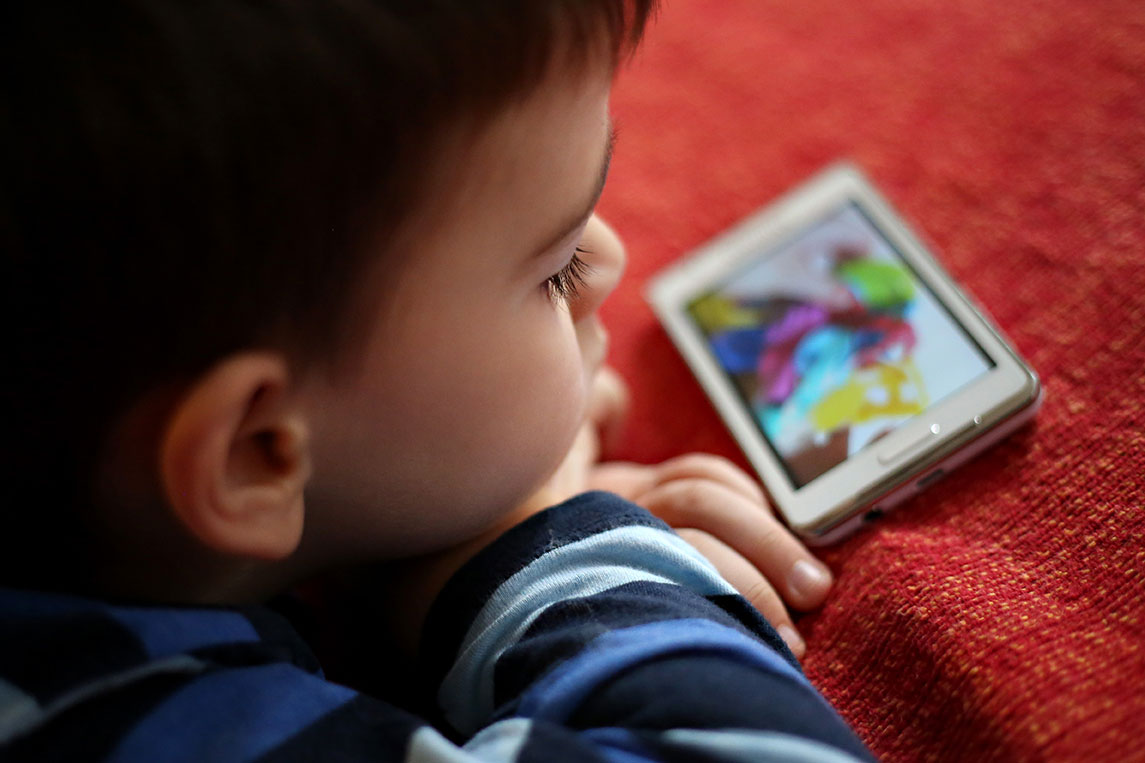
Chances are that you have not just read with amazement but also remember a Times Of India report sometime ago which spoke of two brothers aged 22 and 19 who were so hooked to their gaming consoles, that they forgot to eat, study or even bathe. The report went in to say how they had to undergo rehabilitation in the psychiatry ward of the noted Ram Manohar Lohia hospital in Delhi. Not just at 19, reports continue to show that children are getting addicted to technology at ages as low as 4. For most parents conversations such as these are increasingly becoming a reality:

Parent: So how was school today?
Child (watching youtube videos, earphone in place): No response
Parent ( increased pitch): Did you get any homework
Child: Hmmmm
Parent (yanking the earphone away): Sit to do your homework
Full blown tantrum begins to brew……
If this sounds familiar, you are not alone as technological devices have addictive potential. Dr Peter Whybrow, Director of Neurosciences at UCLA goes as far as to call them “ electronic cocaine”. In fact in a famous New York Times Post, Dr Nicholas Kardas goes on to say that “ technology is so hyper arousing that it raises dopamine levels – the feel good neurotransmitter most involved in the addiction dynamic.” He adds that brain imaging research shows that it affects the brain’s frontal cortex in exactly the same way as cocaine does.
While a child’s all around development requires physical activity, social interaction and creative play, immersion into gadgets hampers all of this. Neuroscientists have gone as far as to say that once a child becomes a true tech addict, treatment can be difficult. The obvious corollary therefore is to invest in prevention of this growing epidemic.
So how much is too much?
The one question that is definitely on the mind of every parent is how much really is too much, or should you be concerned each time your child as much as goes near a technology enabled device? Let us face it complete abstinence from technology seems far-fetched given that a whole lot of educational activities these days often happen on these devices.
While there may be no clear advisory on just how much screen time is healthy, In 2013 the US Department of Health had the following recommendation:
- Screen time is a strict no-no for children under 2 years
- Maximum screen time for children over two years should be no more than two hours a day
Research on the other hand, shows that kids are increasingly spending more and more time on their devices. According to market research firm Childwise, children between the age of 5 and 16 spend an average of as much as six and a half hours a day in front of a screen.
Surprisingly, all of it does not have to do with kids alone. Research also suggests that one of the reasons behind this over use is also that parents use tech gadgets to entertain their children as they are convenient. Think of all those times you have put the child in the trolley in the supermarket, an ipad in hand or allowing him or her to play a game to distract her from a tantrum.
There are no two thoughts then on the fact that gadget time needs to be controlled. Here are some handy tips:
# 1. Offer a Creative solution
The fact remains that children reach out for devices when they are feeling bored. Providing your children with alternatives therefore is imperative. Encourage them to sign up with a sports team, pursue a hobby or simply explore the outdoors. With little time to sit and stare at their devices, it will soon fall out of their consideration set.
# 2. Have honest conversations
It is a good idea to have an honest conversation with your children on why their screen time is limited. Establish rules when it comes to having meals together, for example. Tech free family meals should not be compromised.
# 3. Set time limits
Ensure there are clear, unambiguous rules when it comes to screen time, depending on the age of the child. The rules can be different for weekdays and weekends but typically should not be more than an hour at a stretch.
# 4. Ensure screen time does not come at the expense of outdoor play
Just as you set time aside for engagement with screens, ensure there is a time set aside for playing outdoors that helps children get physical exercise as also sharpens their social skills.
#5. Screen time cannot precede homework
This rule ensures that study time is on high priority and school work does not take a beating on account of technology.
#6. Set an example
Now this one may prove to be a toughie, what with parents living their lives virtually contending with work emails, skype calls, twitter and facebook chats. However it is imperative that you set the right example. Telling your child to restrict screen time, pointing out its various disadvantages and indulging in more of it yourself, is a sure fire way of ensuring that the child cheats on rules set by you.
#7. Keep a watch
Not only is it important that you oversee how much time your child is spending clued to his or her gadgets, it is also important to see what they are watching. Ensure that the doors are open during their computer time. With younger children, especially it makes sense to sit with them and watch their favourite stuff together. Ensure that you do not allow the children to carry ther devices to bed. In fact as far as possible keep them in a different room overnight so children are not tempted to use them immediately before and after sleep.
Importantly, watch out for any signs that may show that your child is crossing the line when it comes to usage of technology. Some of the areas to keep a watch on, include:
- In the absence of a screen does the child display restless behavior?
- Is your child rushing through all other activities to be on screen?
- Are the child’s sleep patterns, meal times getting affected?
- Is the child’s school work suffering on account of his obsession with gadgets?
- Is the child trying to side step the limits you have put on screen time?
Finally – Digital Detox
Should you feel that your child is getting addicted to the digital world, Psychiatrist Dr Richard Graham recommends a “ 72 hour digital detox”. Although, as he cautions, you need to be prepared for withdrawal symptoms during this period! In case you feel the problem is escalating, it is recommended that you trust your instincts and seek medical help.

Amita is an experienced educator with over 30 years of experience. She has an outstanding understanding of child development, having worked with various age groups for prestigious businesses. She has been dedicated to handling Footprints’s Curriculum and Delivery department for the past decade. Amita’s credentials include being one of India’s few HighScope Curriculum certified trainers and volunteering as a course leader for Landmark Education, the world’s largest training firm.

